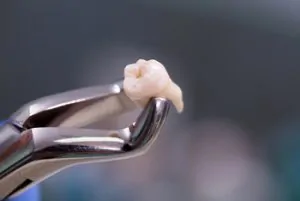Travelling soon after dental work often leaves many people unsure. This raises a key question: can you fly after tooth extraction? The answer depends on various factors unique to each situation. Timing your flight carefully gives your mouth the opportunity to heal properly. Gaining a clear understanding of how flying may affect your recovery ensures you make informed decisions. This guide walks you through what to consider before planning air travel after a tooth removal.
Immediate Risks of Air Travel After Tooth Extraction
Flying shortly after tooth extractions carries certain risks that travellers should not overlook. Proper awareness helps you avoid complications that could otherwise delay recovery or cause unnecessary discomfort mid-flight.
Pressure Changes Can Disrupt Healing
The cabin pressure inside an aircraft drops as altitude increases, leading to reduced atmospheric pressure around you. For a person who recently had a tooth extracted, these pressure changes may affect the sensitive extraction site. Gas expansion within any small air pockets left inside the empty socket can cause discomfort or even significant pain. This is especially true after surgical extraction procedures, where sinus cavities may have been close to or involved in the treatment. Planning the flight with your healing timeline in mind helps to reduce these pressure-related issues.
Risk of Increased Bleeding Mid-Flight
After tooth removal, a stable blood clot forms over the extraction site to protect it. The lowered cabin pressure can potentially disturb this clot if the site has not yet stabilised. Movement of the clot may cause increased bleeding or delay the healing process. This complication becomes even more likely if the person is on certain medications or has underlying health conditions that affect clotting. Staying grounded long enough to let the clot stabilise is often the safest route.
 Dry Socket May Develop from Premature Flying
Dry Socket May Develop from Premature Flying
Flying after tooth extraction too soon increases the chances of developing a dry socket. This occurs when the protective blood clot becomes dislodged, exposing the bone and nerve endings. The result is intense pain that can make a flight unbearable. Once a dry socket sets in, treatment becomes more complicated, and the healing process lengthens. Avoiding air travel during the initial days of clot formation greatly reduces this risk.
Sinus Pressure Adds Further Discomfort
Tooth extractions involving the upper teeth may increase your susceptibility to sinus pressure changes during air travel. If the maxillary sinus cavity has been affected during upper tooth removal, rapid pressure shifts can create sinus discomfort or even a sinus squeeze. Symptoms may include sinus congestion, facial pain, or headaches that worsen as the plane ascends or descends. Waiting for tissues to stabilise helps avoid these painful sensations.
Simple Extractions May Allow Sooner Travel
Not all extractions carry the same risk. In cases of simple extraction involving lower teeth or teeth far from sinus cavities, the recovery may allow travel sooner. As long as the bleeding has stopped, no swelling remains, and the healing process is well underway, some people may safely fly after a few days. Each situation should be reviewed carefully to ensure you are not placing your dental health at risk by flying prematurely.
Healing Timelines: How Soon Is Safe for Air Travel?
The time required before flying safely varies depending on your procedure type, overall health, and response to healing. Knowing the average timelines helps you better plan your trip with confidence.
Flying Immediately After Extraction Is Not Advised
For most people, air travel immediately after dental surgery is discouraged. The extraction site remains highly sensitive for the first 24 to 48 hours. Blood clots are still forming, and tissues remain vulnerable to the effects of cabin pressure. Flying during this window may jeopardise healing and prolong recovery.
Waiting 48 to 72 Hours Minimises Risks
In many routine cases, dentists recommend waiting at least 48 to 72 hours before considering air travel. By this point, the blood clot has typically stabilised, and the soft tissues have begun to close around the extraction site. Minor swelling may persist but should not be aggravated by flying at this stage if no complications are present. Careful monitoring during this early period remains essential.
Wisdom Tooth Extractions Often Require Longer Delays
Wisdom teeth removals often involve more extensive surgical work and carry a higher risk for complications such as a dry socket or infection. In these cases, waiting seven to ten days before boarding a flight is usually advised. The healing process for wisdom tooth extractions includes deeper tissue repair, so giving the area extra time helps avoid unnecessary pain during air travel.
Complex Surgical Extractions May Delay Travel Further
When surgical extraction is required for impacted or fractured teeth, a longer recovery window is typically recommended. Depending on the complexity, dentists recommend waiting two weeks or more before considering flight plans. This delay allows swelling to resolve fully and reduces the chance of sinus pressure causing problems mid-air.
Underlying Health Issues Affect Timing
Patients with certain health conditions may experience delayed healing after tooth extractions. Diabetes, blood disorders, or immune system issues can extend the necessary waiting period. Always inform your dental practitioner of any chronic medical issues that may affect the treatment plan and recovery timeline before making travel arrangements.
The Dentist’s Instructions Take Priority
While general guidelines provide useful timeframes, the most reliable advice comes directly from your treating dental professional. Your dentist will evaluate your extraction site, review your oral health history, and recommend a safe waiting period for flying. Following these personalised instructions ensures that you protect both your dental health and overall well-being.
Pre-Flight Preparation to Minimise Discomfort
If you have healed sufficiently and received clearance to fly, a few smart preparations can help make the journey more comfortable and protect your mouth during the trip.
Maintain Strict Oral Hygiene Before Flying
In the lead-up to your flight, continue practising careful oral hygiene. Gentle brushing and regular rinsing with saline help reduce bacteria around the extraction site. Avoid vigorous rinsing or brushing directly over the extraction site itself. Preserving cleanliness supports the healing process while you prepare for travel.
Pack Pain Medication as a Precaution
Even when cleared to fly, mild discomfort may still occur due to cabin pressure changes. Carrying over-the-counter pain medication can offer quick relief if tooth pain flares mid-flight. Your dental professional may also recommend prescription pain relievers depending on your specific recovery needs. Having medication easily accessible prevents unnecessary suffering while in the air.
Apply a Cold Compress Before Departure
Applying a cold compress before your flight may help reduce any minor swelling or sensitivity. Cooling the area promotes comfort and minimises residual inflammation as you prepare for take-off. This small step can improve your overall flying experience following dental treatments.
Choose Soft Foods Before and During Travel
Eating soft foods prior to and during your trip helps reduce strain on the healing site. Soups, smoothies, mashed vegetables, and soft fruits minimise chewing pressure. Avoid hard, crunchy, or spicy foods that may disturb the extraction site or increase discomfort during air travel.
Use a Travel Pillow to Support Your Head
A travel pillow can help stabilise your head and neck during rest periods in flight. Reducing head movement prevents unnecessary pressure on healing tissues in your mouth. Comfortable support also lowers your chance of waking up with jaw pain or stiffness during longer flights.
Limit Acidic Foods and Hot Drinks
Before flying, avoid acidic foods or beverages that may irritate the healing gum tissue. Hot drinks such as tea or coffee can also increase blood flow to the area, potentially heightening sensitivity. Choosing cooler, neutral foods and beverages keeps the extraction site calm during air pressure changes.
Special Considerations for High-Risk Cases
Some people face unique risks when flying after tooth removal. These special considerations should be carefully weighed before deciding whether to proceed with air travel.
Patients With Sinus Involvement Need Extra Caution
When upper teeth are extracted near the sinus cavities, extra time is often needed before flying. Any communication between the sinus and the extraction site may create complications under changing air pressure. In rare cases, sinus perforation may occur, requiring repair before flying is safe. Even minor perforations can lead to sinus infections if not properly managed before travel. Early evaluation and imaging help identify whether additional healing time is required before safely boarding a flight.
Aviation Dentistry Highlights Air Travel Concerns
Aviation dentistry focuses on the effects of air pressure on oral tissues. Insights from this field show that the combination of cabin pressure, sinus pressure, and gas expansion can significantly affect dental surgery outcomes if flying too soon. Consulting a dental practitioner familiar with aviation dentistry principles ensures personalised precautions. These detailed evaluations consider unique flight environments that may not affect the general population. Pilots, frequent travellers, and cabin crew often benefit from aviation dentistry assessments to minimise risks.
Professional Flight Crew Face Greater Exposure
Flight attendants or frequent fliers may need extended recovery time before returning to regular flight schedules. Repeated exposure to atmospheric pressure changes can prolong healing and increase sensitivity around an extraction site. Delaying work travel for several weeks may prevent chronic complications in frequent flyers. Inconsistent cabin pressure combined with frequent take-offs and landings places added strain on healing tissues. Airlines may require medical clearance before allowing returning crew members back into duty following dental surgery.
Pre-Existing Oral Conditions May Complicate Recovery

Seek Immediate Help for Severe Symptoms
If you experience intense pain, swelling, or bleeding after flying post-extraction, seek dental care promptly. Delayed treatment of complications such as dry socket, infection, or increased bleeding may worsen your condition. Being proactive about any worsening symptoms protects your long-term dental health. Contacting your dental practitioner early can help prevent more invasive treatments later. Swift intervention often reduces discomfort and speeds up recovery time significantly. Ignoring severe pain could indicate deeper complications requiring immediate attention to prevent further damage.
Always Follow Dentist’s Instructions Closely
Ultimately, no general rule replaces the importance of personalised advice. Following the instructions provided by your dentist safeguards your oral medicine recovery. Every tooth extraction case is different, and tailored care helps avoid potential complications while ensuring safe travel. Ignoring professional guidelines can lead to unnecessary setbacks during your healing journey. Staying in close contact with your dental care team provides reassurance and helps address any unexpected changes quickly.
Prioritise Healing Before Boarding Your Flight
Air travel after tooth extractions requires careful timing and preparation. Giving your mouth the opportunity to heal properly protects you from painful complications such as dry sockets, sinus pressure, or increased bleeding. Once you receive clearance to travel, taking appropriate precautions will further support your comfort and oral health in flight. To schedule a consultation or discuss your post-extraction care, call our clinic today on (02) 9054 5281. Let us help you protect your smile while planning your travels.
Note: Any surgical or invasive procedure carries risks. Before proceeding, you should seek a second opinion from an appropriately qualified health practitioner.
References
https://www.medicalnewstoday.com/articles/326147
https://www.dentalhealth.org/what-to-do-following-an-extraction


 Dry Socket May Develop from Premature Flying
Dry Socket May Develop from Premature Flying